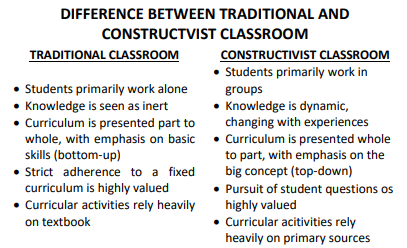Questões de Concurso
Comentadas sobre uso dos adjetivos | use of adjectives em inglês
Foram encontradas 75 questões

I. In the structure “Oprah was deeply invested” the word “deeply” is as adjective.
II. The structure “the perfect person for each role.” is a nominal group connected to preposition “for” and the headnoun is “role”.
III. The word “invested” can be replace by “take part”.
IV. In the expression “on the casting choices” it refers to actor or actress in a play or film means to choose them to act a particular role in it.
Which ones are correct?
Julgue o item subsequente.
Adjective order is a crucial aspect of English syntax, and
there is a specific sequence that native speakers
instinctively follow when using multiple adjectives before
a noun. This order is based on categories such as opinion,
size, age, shape, color, proper adjective, and purpose.
Read the advertising text to answer question
Learn a language in 2 week
“There has never been a _____________ way to learn a new language! Just spend an hour a day following Babel, a new online language course, based on the very _____________ language teaching theories. Most people can expect to reach fluency within six months, although the more time you spend on it, _______________ your progress will be. And at only $150 Babel is certainly _________________ most other similar courses, which often cost over $300. Apply online for Babel, the language course described as ‘________________ method to have been invented in the past decade, judging by its results’. And remember, we`re offering a 10% discount for the first 200 orders, so ________________ you apply, the better your chance of paying less!”
Mark the option that fills in the advertisement’s blanks with the correct adjetive forms.
The adjective “dull”, in the first sentence of the fourth paragraph, could be replaced by boring without changing the meaning of the sentence.
Judge the following item, about the vocabulary and the grammatical features of the text.
In the first paragraph, if the authors qualified “native
language” as Asian, primaeval, guttural and beautiful, the
correct order of such adjectives would be: beautiful Asian
guttural primaeval native language.


1. I shouldn’t have ___ sugar… Sweets are bad for my health. 2. There are too ___ cookies, they won’t all fit in the jar. 3. Only a ___ people came, it was a very small event. 4. It was just an hour! They did a lot in the ___ time they had.
Mark the alternative that fills out, correctly and respectively, the gaps in the sentences above.
Try these expert tips for a safer solo trip

(Available at: https://news.airbnb.com/try-these-expert-tips-for-a-safer-solo-trip/ – text especially adapted for
this text).

I. The process of learning how to read, achieving knowledge of the word. II. The objective of this approach was not to reproduce “banking” education. III. The challenging circumstances (…) of the Brazilian Northeast Region. IV. Exiled during the military dictatorship in Brazil.
Julgue o item subsequente.
Julgue o item subsequente.
How trade can become a gateway to climate resilience
Most people don't think about climate change when they lift a café latte to their lips or nibble on a square of chocolate — but this could soon change.
Based on current trajectories, around a quarter of Brazil’s coffee farms and 37% of Indonesia’s are likely to be lost to climate change. Swathes of Ghana and Côte d’Ivoire — where most of the world’s chocolate is sourced — will become too hot to grow cocoa by 2050.
Climate-related droughts and deadly heatwaves across the world have coincided with severe storms, cyclones, hurricanes, and, of course, a pandemic. As a consequence of these shocks, millions of people have been left without homes, and a growing number of people now face starvation and a total collapse of livelihoods as growing and exporting staple crops becomes untenable.
We must immediately rethink the shape of our economies, agricultural systems and consumption patterns. Our priority is to manufacture climate resilience in global economies and societies — and we must do it quickly.
Trade can kickstart the emergence of climate-resilient economies, especially in the poorest countries. Trade has a multiplier effect on economies by driving production growth and fostering the expansion of export industries. By shifting focus to production and exports that increase climate resilience, there is potential to exponentially increase the land surface and trade processes prepared to withstand the climate crisis.
Adapted from: https://www.weforum.org/agenda/2022/07/trade-can-be-agateway-to-climate-resilience
I. “We hated the concert, was totally ______” II. “The rotten eggs smell _______.” III. “Of the two routes, this is the ______.” IV. “He is a _____ driver.” V.
I. “He said she was _____ that night.” II. “She's cute as a princess and _____, like her mother.” III. “I’m not beautiful, but I can’t say I’m _______.” IV. “I’m loving this book, it’s so ______”
Escreva as palavras, na ordem correta:
Black – straight – long – hair.
A Brief and Simplified Description of Papermaking
The paper we use today is created from individual wood fibers that are first suspended in water and then pressed and dried into sheets. The process of converting the wood to a suspension of wood fibers in water is known as pulp making, while the manufacture of the dried and pressed sheets of paper is formally termed papermaking. The process of making paper has undergone a steady evolution, and larger and more sophisticated equipment and better technology continue to improve it.
The Wood yard and Wood rooms
The process at Androscogging began with receiving wood in the form of chips or of logs 4 or 8 feet in length. From 6 AM to 10 PM a steady stream of trucks and railroad cars were weighted and unloaded. About 40 percent were suplied by independents who were paid by weight their logs. The mill also received wood chips from lumber mills in the area. The chips and logs were stored in mammoth piles with separate piles for wood of different species (such as pine, spruce, hemlock).
When needed, logs were floated in flumes......(1).....the wood yard.....(2).....one of the mill’s three wood rooms. There, bark was rubbed......(3)........in long, ribbed debarking drums by tumbling the logs against one another. The logs then fell into a chipper;......(4)......seconds a large log was reduced to a pile of chips approximately 1 inch by 1 inch by 1/4 inch.
The chips were stored in silos. There were separate silos for softwoods (spruce, fir, hemlock, and pine) and hardwoods (maple, oak, beech, and birch). This separate and temporary storage of chips permitted the controlled mixing of chips into the precise recipe for the grade of paper being produced.
The wood chips were then sorted through large, flat vibrating screens. Oversized chips were rechipped, and ones that were too small were collected for burning in the power house. (The mill provided approximately 20 percent of all its own steam and electricity needs from burning waste. An additional 50 percent of total electricity needs was produced by harnessing the river for hydroelectric power.)
Once drawn from the silo into the digesters, there was no stopping the flow of chips into paper.
Pulpmaking
The pulp made at Androscoggin was of two types: Kraft pulp (produced chemically) and ground wood pulp (produced mechanically). Kraft pulp was far more important to the high quality white papers produced at Androscoggin, accounting for 80 percent of all the pulp used. Kraft pulp makes strong paper. (Kraft is German for strength. A German invented the Kraft pulp process in 1884.) A paper’s strength generally comes from the overlap and binding of long fibers of softwood; only chemically was it initially possible to separate long wood fibers for suspension in water. Hardwood fibers are generally smaller and thinner and help smooth the paper and make it less porous.
The ground wood pulping process was simpler and less expensive than the Kraft process. It took high quality spruce and fir logs and pressed them continuously against a revolving stone that broke apart the wood’s fibers. The fibers, however, were smaller than those produced by the Kraft process and, although used to make newsprint, were useful at Androscoggin in providing “fill” for the coated publication gloss papers of machines 2 and 3, as will be described later.
(A)The chemical Kraft process worked by dissolving the lignin that bonds wood fibers together. (B) It did this in a tall pressure cooker, called a digester, by “cooking” the chips in a solution of caustic soda (NaOH) and sodium sulfide (Na2S), which was termed the “white liquor.” (C)The two digesters at Androscoggin were continuous digesters; chips and liquor went into the top, were cooked together as they slowly settled down to the bottom, and were drawn off the bottom after about three hours. (D) By this time, the white liquor had changed chemically to “black liquor’’; the digested chips were then separated from this black liquor. (E)
In what was known as the “cold blow” process, the hot, pressurized chips were gradually cooled and depressurized. A “cold liquor’’ (170°F) was introduced to the bottom of the digester and served both to cool and to transport the digested chips to a diffusion washer that washed and depressurized the chips. Because so much of the lignin bonding the fibers together had been removed, the wood fiber in the chips literally fell apart at this stage.
The black liquor from the digester entered a separate four-step recovery process. Over 95 percent of the black liquor could be reconstituted as white liquor, thereby saving on chemical costs and significantly lowering pollution. The four-step process involved (1) washing the black liquor from the cooked fiber to produce weak black liquor, (2) evaporating the weak black liquor to a thicker consistency, (3) combustion of this heavy black liquor with sodium sulfate (Na2SO4 ), and redissolving the smelt, yielding a “green liquor” (sodium carbonate + sodium sulfide), and (4) adding lime, which reacted with the green liquor to produce white liquor. The last step was known as causticization.
Meanwhile, the wood-fiber pulp was purged of impurities like bark and dirt by mechanical screening and by spinning the mixture in centrifugal cleaners. The pulp was then concentrated by removing water from it so that it could be stored and bleached more economically.
By this time, depending on the type of pulp being made, it had been between 3 1/2 and 5 hours since the chips had entered the pulp mill.
All the Kraft pulp was then bleached. Bleaching took between 5 and 6 hours. It consisted of a three-step process in which (1) a mix of chlorine (Cl2 ) and chlorine dioxide (CIO2 ) was introduced to the pulp and the pulp was washed; (2) a patented mix of sodium hydroxide (NaOH), liquid oxygen, and hydrogen peroxide (H2 O2 ) was then added to the pulp and the pulp was again washed; and (3) chlorine dioxide (ClO2 ) was introduced and the pulp washed a final time. The result was like fluffy cream of wheat. By this time the pulp was nearly ready to be made into paper.
From the bleachery, the stock of pulp was held for a short time in storage (a maximum of 16 hours) and then proceeded through a series of blending operations that permitted a string of additives (for example, filler clay, resins, brighteners, alum, dyes) to be mixed into the pulp according to the recipe for the paper grade being produced. Here, too, “broke” (paper wastes from the mill itself) was recycled into the pulp. The pulp was then once again cleaned and blended into an even consistency before moving to the papermaking machine itself.
It made a difference whether the broke was of coated
or uncoated paper, and whether it was white or colored. White, uncoated paper could be recycled immediately. Colored, uncoated paper had to be rebleached.
Coated papers, because of the clays in them, could not
be reclaimed.
“The ground wood pulping process was simpler and less expensive than the Kraft process. It took high quality spruce and fir logs and pressed them continuously against a revolving stone that broke apart the wood’s fibers.”
1. the word ‘simpler’ is an adjective in the superlative form. 2. the word ‘them’ is an object pronoun. 3. the tense used in ’took’, is simple past of a regular verb. 4. the word ‘that’ can be replaced by ‘which’ without changing its meaning.
Choose the alternative which presents the correct ones: